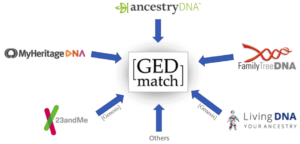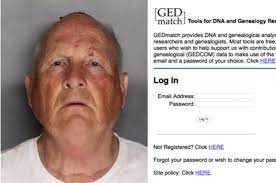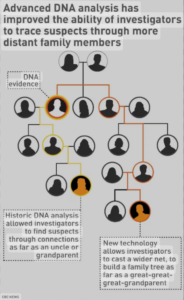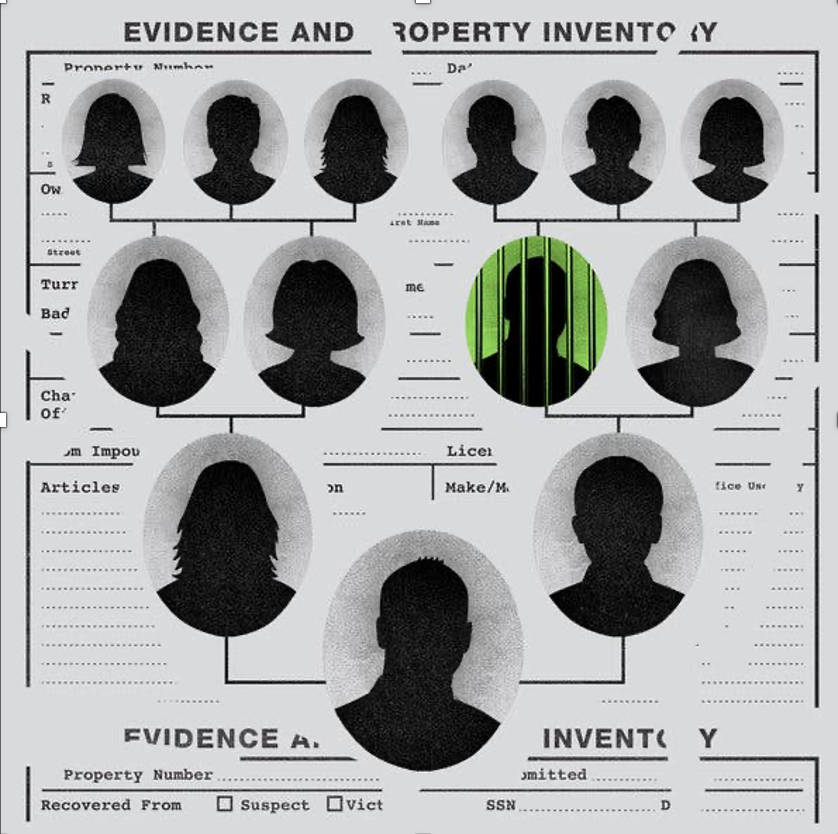Ancestral websites have been used to allow users to learn more about themselves by giving them insight to their family history. It allows them to create family trees to trace their lineage and learn about possible ancestors [1]. These results are created through the search of public records, census data, birth and death certificates. GEDmatch, which is one of the many ancestry websites used, explains how a persons genetic profile is compared to all other profiles that have submitted to their website[2].This allows for matches to be made to form their family tree. This is important information to share to the users because it helps to give insight on how matches made amongst other users on the platform gives details about possible relatives that exist and can even go as far to show distant relatives.


In 2018 Joseph James DeAngelo was finally arrested from the help of genealogy. A law enforcement officer submitted one of the DNA samples collected at the crime scenes to GEDmatch. Although DeAngelo himself never submitted DNA to any of these websites and was not in the database, they were able to find a match to one of his distant relatives which allowed them to start obtaining leads by formation of a family tree[7].

The Golden state killer case received a lot of public attention due to the technology that was used to aid in his arrest . People questioned wether such searches are legal and how consumers can protect themselves from their genetic information being used and obtained by law enforcement. This attention from the public led to GEDmatch to alter their policies to include that they permit law enforcement the use of its database to investigate homicides and sexual assaults [8].
In 2008 the Genetic Information Nondiscrimination Act (GINA) was signed into law. This act protects against discrimination of ones genetic information from employers and health insurers [9]. However this law does not protect the privacy of genetic information from law enforcement and there is no exact law that does. As of May 18, 2019, GEDmatch updated its policies and began requiring members that are joining to decide during their registration if they will opt-in or opt-out of law enforcement matching, having opting in is as the websites default setting [10].This would mean that pre-existing members would have to change their settings depending on their preferences if the website did not automatically opt- out existing users which can have existing users unaware that this has become an option. If a user chose to opt- out of law enforcement matching, they cannot be certain that any relatives they have also opted out and voided any possible traces to them. Which goes in hand with users who chose to opt- in, relatives who did not voluntarily submit their DNA to any database can now become a part of an investigation due to the fact that they are family member of the suspect who allowed matches to transpire and create a family tree [10].

This concludes that going forward full transparency should be granted to the consumers and ancestry websites should be required to make their policies and certain acknowledgments about their data possibly being used for forensic investigations easily accessible and in layman’s terms rather than having them buried at the very end of their police’s and terms in small print while also using vocabulary that can cause confusion of its meaning to consumers. These ethical concerns and issues should be continued to be critically investigated before the use of this type of technology is fully endorsed and becomes a primary source of evidence and part of routine procedure due to the unethical stance of privacy being violated.
Sources:
1. What is Ancestry.com and How Does It Work? (2022, March 11). TechBoomers.com. https://techboomers.com/t/what-is-ancestry
2. The Magic Within Your DNA | How it Works – GEDmatch. (2022, June 10). GEDmatch – Comprehensive Solutions for Genetic Genealogy and Family Tree Reseach. https://www.gedmatch.com/how-it-works/
3. Berkman, B. E., Miller, W. K., & Grady, C. (2018). Is It Ethical to Use Genealogy Data to Solve Crimes?. Annals of internal medicine, 169(5), 333–334. https://doi.org/10.7326/M18-1348
4. Do police have access to your DNA? What to know about investigative genetic genealogy. (n.d.). The Palm Beach Post. https://www.palmbeachpost.com/story/news/crime/2023/02/06/police-are-using-genealogy-sites-to-solve-crime-heres-what-to-know/69826173007/
5. Guerrini, C. J., Robinson, J. O., Petersen, D., & McGuire, A. L. (2018). Should police have access to genetic genealogy databases? Capturing the Golden State Killer and other criminals using a controversial new forensic technique. PLoS biology, 16(10), e2006906. https://doi.org/10.1371/journal.pbio.2006906
6. The untold story of how the Golden State Killer was found: A covert operation and private DNA. (2020, December 8). Los Angeles Times. https://www.latimes.com/california/story/2020-12-08/man-in-the-window
7. Phillips C. (2018). The Golden State Killer investigation and the nascent field of forensic genealogy. Forensic science international. Genetics, 36, 186–188. https://doi.org/10.1016/j.fsigen.2018.07.010
8. Madden, P. (2018, April 30). Evidence is controversial in Golden State Killer case. WTRF. https://www.wtrf.com/news/evidence-is-controversial-in-golden-state-killer-case
9. The Genetic Information Nondiscrimination Act of 2008. (n.d.). US EEOC. https://www.eeoc.gov/statutes/genetic-information-nondiscrimination-act-2008
10. Guerrini, C. J., Wickenheiser, R. A., Bettinger, B., McGuire, A. L., & Fullerton, S. M. (2021). Four misconceptions about investigative genetic genealogy. Journal of law and the biosciences, 8(1), lsab001. https://doi.org/10.1093/jlb/lsab001
11. Ph.D., C. S. (2022, July 18). GEDmatch Genesis review – Best tool for genetic genealogy? Nebula Genomics Blog. https://nebula.org/blog/gedmatch-genesis-review/
12. The Genealogy Website That Helped Crack The Golden State Killer Case Has Been Bought By A Forensic Genetics Firm. (2019, December 10). BuzzFeed News. https://www.buzzfeednews.com/article/peteraldhous/the-genealogy-website-that-helped-crack-the-golden-state
13. Vancouver police using same DNA technique that caught suspected Golden State Killer | CBC News. (n.d.). CBC. https://www.cbc.ca/news/canada/british-columbia/golden-state-killer-dna-vancouver-cold-case-leonardo-1.5145144
14. Using DNA Databases to Track Down the Golden State Killer Suspect. (2018, May 8). Using DNA Databases to Track Down the Golden State Killer Suspect | College of Biological Sciences. https://biology.ucdavis.edu/news/using-dna-databases-track-down-golden-state-killer-suspect



1 comment
Andrew Ponce
Technology is improving every day. This article identifies this fact. What this publication does for the reader is bring to light a new mention of how technology can affect the lives of others. This article does an amazing job at providing structured data and teaching the read about this topic. Student;s should take every opportunity to look into the advancement of technology and how it can now be used to change the game of crime solving, but also the issues of ethics that come into play. Amazing work!